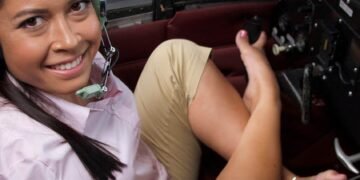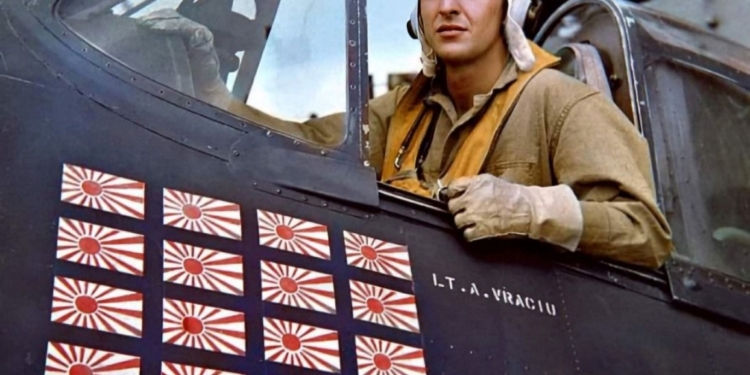WWII Hero Alexander Vraciu: The Navy’s Triple Ace Who Dominated the Pacific Skies
The Pacific Theater of World War II produced countless heroes, but few matched the aerial prowess and bravery of Commander Alexander “Alex” Vraciu. A Navy Cross recipient, Triple Ace, and one of the US Navy’s top flying aces, Vraciu’s legendary actions during the Battle of the Philippine Sea (the “Great Marianas Turkey Shoot”) cemented his legacy as a titan of combat aviation history. This is the story of a man whose courage reshaped the course of the war.
Early Life and Rise to Fame
Born in East Chicago, Indiana, Alexander Vraciu’s journey to becoming a WWII Ace began when he joined the Navy’s flight training program in 1941. By 1943, he was flying F6F Hellcats with VF-6 Squadron, quickly proving his mettle in the skies over the Pacific. His precision, tactical brilliance, and relentless focus earned him rapid promotions—and the attention of his enemies.
The Great Marianas Turkey Shoot: A Defining Moment
On June 19, 1944, during the Battle of the Philippine Sea, Vraciu etched his name into military history. As Japanese forces launched a massive aerial assault, Vraciu single-handedly engaged a bomber formation in air-to-air combat, downing six enemy aircraft in just eight minutes using only 360 rounds of ammunition. This feat not only showcased his marksmanship but also disrupted a critical Japanese offensive, contributing to the overwhelming Allied victory nicknamed the “Great Marianas Turkey Shoot.”
The next day, Vraciu again soared into action, escorting U.S. bombers targeting the Japanese fleet. His Navy Cross citation recounts how he “fearlessly closed with a group of hostile fighters,” destroying one aircraft and damaging another to protect Allied forces. These actions enabled the successful strike on a Japanese carrier, crippling enemy operations.
Survival Against the Odds: From POW Evasion to Legacy
Vraciu’s combat career faced a harrowing turn in December 1944 when he was shot down over the Philippines. Evading capture, he joined Filipino guerrilla forces, surviving for months behind enemy lines before reuniting with U.S. troops in February 1945. His resilience mirrored his tenacity in the skies.
After the war, Vraciu remained a pillar of the Navy, retiring in 1964 as a Commander. He later built a life in Danville, California, working at Wells Fargo Bank and raising five children with his late wife, Kathryn. His passing in 2015 at age 96 marked the end of an era, but his legacy lives on through his 11 grandchildren, 13 great-grandchildren, and the countless lives he inspired.
Honoring a Hero: Visit His Final Resting Place
Commander Alexander Vraciu lies at rest in Oakmont Memorial Park, Lafayette, California. Visitors paying respects at his grave honor not just a Navy Cross recipient, but a symbol of American courage and ingenuity during WWII.
Why Alexander Vraciu’s Story Matters Today
- Combat Aviation Pioneer: Vraciu’s 19 air victories and 21 ground kills rank him 4th among Navy flying aces—a testament to unmatched skill.
- Leadership Under Fire: His quick thinking during the Pacific Theater battles saved countless lives and shifted momentum in key campaigns.
- Enduring Inspiration: From guerrilla resistance to postwar service, Vraciu embodied the Greatest Generation’s values of duty, sacrifice, and resilience.
Final Thought
Alexander Vraciu’s story is more than a chapter in history—it’s a reminder of the courage that defined a generation. As we reflect on his Navy Cross honors and Triple Ace status, let us ensure that his contributions to freedom are never forgotten. Lest We Forget.
Share this post to keep Commander Vraciu’s legacy alive! For more WWII hero stories












































